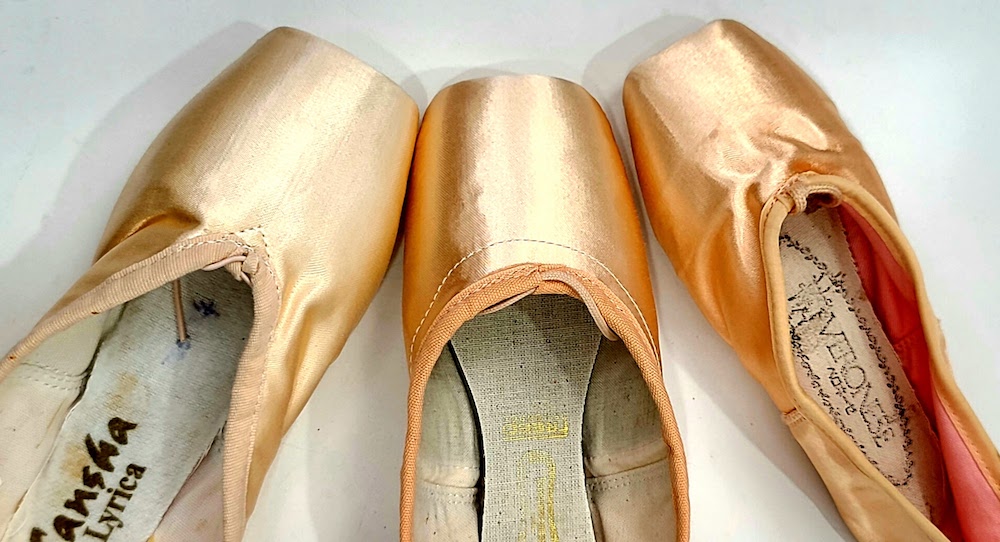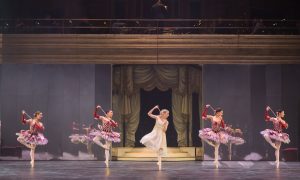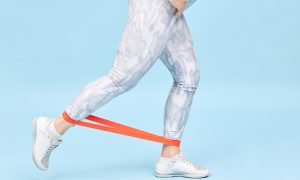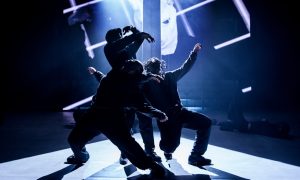The new year always brings some excitement, with new goals and dreams. For some dance students, the new year brings on new levels of technique and maybe…pointe shoes! Will you be starting pointe in 2024?
When you bounce happily out of the store with your brand new, shiny pointe shoes, make sure you’ve stocked up on these essentials as well. That way, you’ll be ready for your first class. Read on for our list of must-have pointe accessories!
#1. Elastic
Elastic provides extra support and helps keep the heels of the pointe shoes on your feet. Your local dancewear retailer will sell elastic specifically for pointe shoes, at a correct width, so be sure to ask for them. You don’t want the elastic to be too thin; it would cut off circulation and be very uncomfortable.
Elastic is thick, so you’ll need a good sewing kit to help you sew them on your shoes. We love the Stitch Kit™ available at Capezio, which includes super strong thread and two large-eye needles for easy threading. It’s perfect for pointe shoes or ballet flats! In addition, the kit includes detailed sewing instructions, and of course you can ask your pointe teacher if they have any preferences or suggestions for how you sew them. (Added bonus: The Stitch Kit™ is a great dance bag essential in case of any quick ribbon or costume fix needed.)
#2. Ribbons
You’ll want to be sure to pick up some ribbons for your pointe shoes as well. Not only do ribbons look beautiful and ballerina-like, but they are also crucial because they support your ankles in the shoes. You should purchase your ribbon from a dance supplier so that it’s the correct thickness. Single-faced satin is a good choice – the ribbons look pretty to the eye on the outside of the ankle but are less silky on the inside for more grip against your tights.
#3. Toe tape or Band-Aids
While dancing on pointe certainly looks majestic and ethereal, we all know that it can be painful, especially when you’re first starting and getting used to it. And it can cause some icky, painful blisters. You can protect your toes with toe tape, which reduces friction and prevents the chafing that causes blisters. You can also use Band-Aids, but they seem to come off more easily and can be a more expensive option than toe tape.
#4. Padding
Toe pads can be a very personal choice for dancers, so you may have to play around with different options to see what works best for you and your feet. Although some dancers may not even wear any padding in their shoes, most do, and as a beginner, you’ll most likely want to wear something to cushion your toes as you get used to the pointe sensation. No matter the padding, though, you want to make sure your foot is not overcrowded in the shoe; you’ll want to still feel your foot and toes. You can ask your teacher or pointe shoe fitting specialist what they recommend for padding. Some like lamb’s wool or Lamb’s Wool Toe Pads, which are breathable and protect the toe joints. Many dancers use gel pads like Ouch Pouch®, which contain a thin layer of gel material inside two pieces of fabric to create a comfortable pouch that covers the toes, bunion areas and ball of the foot. And many ballet stars like Sara Mearns, Lauren Lovette and Megan Fairchild are using PerfectFit, a customisable molding system that lets you create a supportive, glove-like fit inside your pointe shoe. After all, nobody’s feet are shaped exactly like a pointe shoe.
#5. Bunion prevention/protection
You may want to acquire toe spacers or a bunion prevention product that can help relieve pressure on the big toe joint or protect the small toe and bunionette area of the foot. You should talk with your teacher before adding them to your pointe routine.
#6. Pointe shoe bag
Of course you’ll need something to store your beautiful new shoes and accessories in! Search online for a pattern to follow to sew your own pointe shoe bag. Or purchase one like Bloch’s Pointe Shoe Bag that we love, which is an open mesh drawstring bag for storing and airing out pointe shoes. Do make sure you take your pointe shoes out of the bag when you get home, so that they dry out and breathe, to ensure no mildew or bacteria build up.












